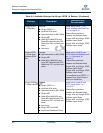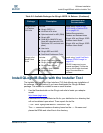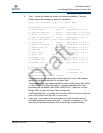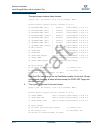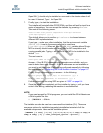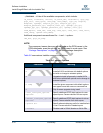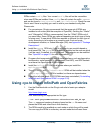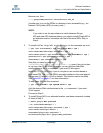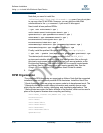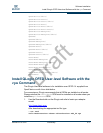
Draft
Software Installation
Using rpm to Install InfiniPath and OpenFabrics
5-14 Preliminary IB0056101-00 G.02
S
RPMs contain config files. Your current config files will not be overwritten
when new RPMs are installed. New config files will contain the suffix .rpmnew
and can be found in /etc/sysconfig and /etc/infiniband. Check the new
files to see if there is anything you want to add to your standard config files
Please note:
For convenience, QLogic recommends that the same set of RPMs are
installed on all nodes (with the exception of OpenSM). Omitting the *-Static/*
and *-Debuginfo/* RPMs is recommended. Use the */32bit/* RPMs only if
you need them. Some RPMs are optional depending on which type of node
is being used. To see which RPMs are required or optional for each type of
node, according to its function as a compute node, front end node,
development machine, or Subnet Manager (SM), see Appendix D “Package
Descriptions”.
Install the
OpenSM RPM only if you do not plan to use a switch-based or
host-based SM. The
OpenSM RPM is normally installed on the node on which
it will be used. If installed, it is off by default. This behavior can be modified.
See “OpenSM” on page 6-3 for more information.
Programs that incorporate the user IB verbs interfaces, such as diagnostics,
benchmarks, verbs-based MPIs (for example, Intel MPI), and SDP sockets
must have the OpenFabrics RPMs installed.
Install the infinipath RPM on all nodes where you install the
mpi-frontend RPM.
The mpi-devel and infinipath-devel RPMs will be installed when the
qlogic-mpi-register RPM is installed, as there are dependencies.
Check that all older stock OFED RPMs have been uninstalled (“Uninstalling
InfiniPath and OpenFabrics RPMs” on page 5-24)
Using rpm to Install InfiniPath and OpenFabrics
1. Use the Downloads tab on the QLogic web site to locate your adapter
model.
http://www.qlogic.com
After downloading the appropriate tar file, type:
$ tar zxvf QLogicOFED<version>-<distribution>-x86_64.tgz
The tar command creates a directory based on the tar file name and
places the RPMs and other files in this directory.
2. The RPMs need to be available on each node on which they will be used.
You can copy the RPMs to a directory on each node that will need them.



